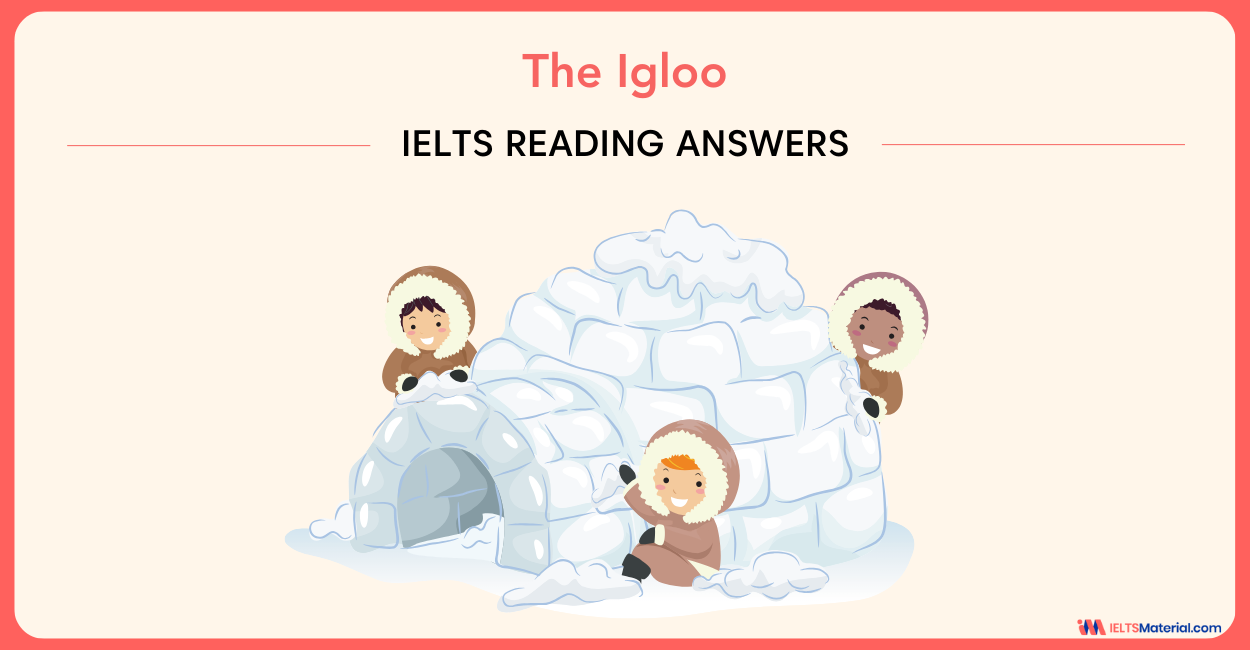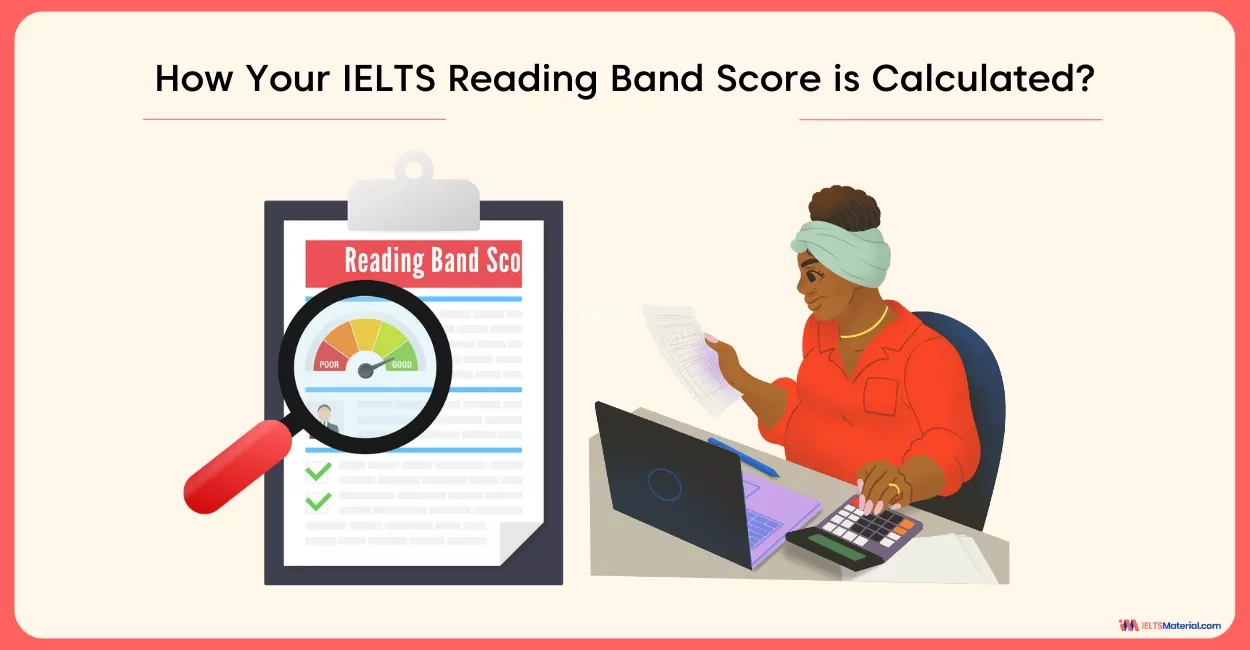Seaweed For Human Consumption Reading Answers
12 min read
Updated On
-
Copy link
Seaweed For Human Consumption is an IELTS Academic Reading topic with 13 questions, covering matching, completion and short-answer questions. Take the test and compare your answers with the explanations provided to improve your chances of a 9 band score.
Table of Contents

Limited-Time Offer : Access a FREE 10-Day IELTS Study Plan!
The IELTS Reading test challenges you to complete three different passages in just 60 minutes. As a result, effective time management for IELTS Reading is crucial to ensure that all questions are attempted within the given timeframe. To master time management and reading techniques, you need to start by practicing reading samples, like Seaweed For Human Consumption Reading Answers.
In this article, we will practice the three different types of IELTS Reading questions, review answers for identifying areas of improvement, and share some essential IELTS exam preparation tips for band score of 8+ in the reading exam.
Reading Passage for Seaweed For Human Consumption Reading Answers
Go through the Seaweed For Human Consumption IELTS Reading Answers passage given below and understand how to get more correct answers for a high IELTS band score.
You should spend about 20 minutes on Questions 1-13, which are based on the Reading Passage below.
Seaweed For Human Consumption
A Seaweeds are algae that live in the sea or in brackish water. Scientists often call them 'benthic marine algae', which just means 'attached algae that live in the sea'. Seaweeds come in three basic colours: red, green, and brown: dulse is the red seaweed; sea lettuce is amongst the green algae; and the brown is a wrack. Red and brown algae are almost exclusively marine, whilst green algae are also common in freshwater and in terrestrial situations. Many of these algae are very ancient organisms, and although lumped together as 'algae' are not actually closely related, having representatives in four of the five kingdoms of organisms. There are about 10,500 species of seaweeds, of which 6,500 are red algae (Rhodophyta).
B The trend today is to refer to marine algae used as food as 'sea-vegetables'. The main species used in Ireland at present are dulse, carrageen moss, and various kelps and wracks. Dulse - also known as dillisk in a number of areas is a red alga that is eaten on both sides of the North Atlantic. Generally only eaten in Ireland after it has been dried, it is frequently sold in small packets, most commonly in the west and north. About 16 tonnes are used in Ireland at present; the species is also eaten in Canada, Iceland, Norway, France and Scotland. About 53 tonnes of carrageen moss were gathered in Ireland in 1994.
C Whilst dulse and carrageen moss are worthy sea- vegetables with a history of utilisation and a small but proven market, other species also show considerable promise. Our kelp resources are considerably under-utilised. All of the kelp species are edible but Laminaria saccharina is probably the most palatable as it has a somewhat sweet taste, probably due to its high levels of mannitol, and it also cooks better.
D Two other brown algae with potential as food are currently under investigation by us: Himanthalia elongata, known in some places as thongweed, and Alaria esculenta, also known as dabberlocks or murlins. Himanthalia is eaten in France after drying or pickling ('Spaghettis de mer), and plants are sold in Ireland dried. After soaking in water it makes a surprisingly fine accompaniment to a mixed salad; it does not have the strong seaweedy taste that some dislike. With the aid of a basic research grant from Forbairt, the Irish research and development body, we are examining the growth and life cycle of populations of this species on the west coast. Plants are easy to collect but must be dried quickly and packaged well to preserve their excellent taste and mouth feel.
E Alaria is a large, kelp-like brown alga that grows on exposed shores, in Ireland, plants grow to considerable sizes, being found up to 6m in length in some areas, but these are dwarfed by some Pacific species that may grow to 18m in lerigth and to 2m in width. With Marine Research Measure funding, a study of the possibility of developing fast-growing hybrids of this species by crossing species from the Atlantic and Pacific is being carried out. We have growing in culture isolates of A.. esculenta from Ireland, Scotland, France, Norway, and Atlantic Canada and other species from British Columbia and Japan. Species of this genus are ideal for cross-breeding studies as the males and females are tiny filamentous plants that are relatively easy to grow and propagate in culture under red light which stimulates reproduction in our growth rooms. Male and female reproductive structures occur on different plants so that we can put plants from one country in with those from another to see if they are sexually compatible.
F To date, we have obtained interesting results with A. praelonga, a large species from Japan that co- operates sexually with A. esculenta from the Aran Islands and other Irish sites. The resulting Irish/japanese progeny are grown initially in sample bottles agitated on a small shaker and their growth rates compared with plants that have resulted from self crosses, Preliminary results are very encouraging, with hybrid plants showing relatively high growth rates. We hope by this method to obtain sterile hybrids that will not reproduce in the wild so that we can introduce foreign genetic material without the fear that some sort of a traffic will be introduced that will take over the west coast of Ireland.
G While studies of these two food species are very promising, we must bear in mind that the market for such sea-vegetables is very small and needs development and investment. Nutritionally, sea- vegetables are as good as any land-vegetable and are superior in their vitamin, trace element and even protein content. The increase in catholic food tastes in Europe should see greater utilisation of sea-vegetables in the next 20 years.
Seaweed For Human Consumption Reading Answers Questions
There are 13 questions in Seaweed For Human Consumption Reading Answers, which presents three different IELTS Reading question types. They are:
- IELTS Reading Matching Features (Q. 1-5)
- IELTS Reading Table Completion (Q. 6-9)
- IELTS Reading Short-Answer Type Questions (Q. 10-13)
Set a timer and complete these questions within the allotted time!
Questions 1-5
Write the correct letter A, B, C or D in boxes 1 – 5 on your answer sheet.
Classify the following features are characterizing:
A Brown algae
B Green algae
C Red algae
D Brown and Red algae
1 Are being investigated as possible food sources.
2 are now called sea-vegetables.
3 make up more than half of all seaweed species.
4 are found on land and in freshwater.
5 are nearly all marine.
Questions 6-9
Complete the table below.
Choose NO MORE THAN THREE WORDS from Reading Passage for each answer.
Write your answers in boxes 6-9 on your answer sheet.
|
Types of brown algae |
Himanthalia elongate |
Alaria esculenta |
|---|---|---|
|
Potential |
Food |
Food |
|
Common Name |
thongweed |
Dabberlocks or 6 ........ |
|
Research Funded |
With a 7......... from forbairt |
By marine research measure |
|
Purpose |
To examine growth and lifecycle populations |
Creation of fast growing 8 ............ |
|
Advantage |
Easy to collect |
Just right for 9........ |
Questions 10-13
Answer the questions below.
Choose NO MORE THAN THREE WORDS from the passage for each answer.
Write your answers in boxes 10-13 on your answer sheet.
10 What does the red light in the growth rooms do?
11 What are the initial growth rates shown to be?
12 What does the sea-vegetable market need?
13 What increasingly should lead to greater consumption of sea-vegetables ?
Download the Seaweed for Human Consumption Reading PDF for future practice!
Seaweed For Human Consumption IELTS Reading Answers with Location and Explanation
Use the answer key below to compare your responses to the Seaweed For Human Consumption IELTS Reading Answers. Make sure to create customized strategies from the feedback from the practice of this IELTS Reading practice test.
| Questions | Answers | Explanation |
|---|---|---|
| 1 | A | The answer can be located in Paragraph D, where it is mentioned that Two other brown algae with potential as food are currently under investigation by us: Himanthalia elongata, known in some places as thongweed, and Alaria esculenta, also known as dabberlocks or murlins. We understand that two brown algae were under investigation for the possibility of food sources. So, the answer is A. Brown algae. |
| 2 | D | We can trace the answer in Paragraph B, where it is mentioned that The trend today is to refer to marine algae used as food as ‘sea-vegetables’. The main species used in Ireland at present are dulse, carrageen moss, and various kelps and wracks. Dulse – also known as dillisk in a number of areas – is a red alga that is eaten on both sides of the North Atlantic. We understand from the lines above that marine algae are known as sea-vegetables, wherein dulse is known as the red algae. We can locate in paragraph A that wrack is known as the brown algae. So, the answer is D. Brown and red algae. |
| 3 | C | We can trace the answer at the end in Paragraph A, where it is mentioned that there are about 10,500 species of seaweeds, of which 6,500 are red algae (Rhodophyta). We understand that more than half of all seaweed species are red algae. Thus, the answer is C. Red algae. |
| 4 | B | We can find references to the answer in Paragraph A, where the writer states that Red and brown algae are almost exclusively marine, whilst green algae are also common in freshwater and in terrestrial situations. We understand that red and brown algae are usually found in marine, whereas the green algae are commonly found on land, and in freshwater. So, the answer is B. Green algae. |
| 5 | D | We can locate the answer in Paragraph A, where it is mentioned that Red and brown algae are almost exclusively marine, whilst green algae are also common in freshwater and in terrestrial situations. We understand that green algae is commonly found in land and fresh water, but the red and brown algae are exclusively found in marine. Here, exclusively means completely. Thus, the answer is D. Brown and red algae. |
| 6 | Murlins | We can find references to the answer in Paragraph D, where it is mentioned that Alaria esculenta, is also known as dabberlocks or murlins. We come to know that the common name for the Alaria esculenta is either dabberlocks or murlins. So, the answer is murlins. |
| 7 | Grant | The answer can be traced in paragraph D, where it is mentioned that With the aid of a basic research grant from Forbairt, the Irish research, and development body, we are examining the growth and life cycle of populations of this species on the west coast. We understand that a basic research grant from Forbrait was offered to examine the life cycle of populations of Himanthalia elongata. Thus, the answer is Grant. |
| 8 | Hybrids | We can locate the answer in Paragraph E, where the writer has mentioned that with Marine Research Measure funding, a study of the possibility of developing fast-growing hybrids of this species by crossing species from the Atlantic and Pacific is being carried out. We understand that with the help of marine research funding, a study of creating fast-growing hybrids was carried out. Thus, the answer is hybrids. |
| 9 | Cross-breeding | We can track the answer in Paragraph E, where it is mentioned that species of this genus are ideal for cross-breeding studies as the males and females are tiny filamentous plants that are relatively easy to grow and propagate in culture under the red light which stimulates reproduction in our growth rooms. We understand that species of the Alaria esculenta are just right for cross-breeding. Thus, the answer is cross-breeding. |
| 10 | Stimulates reproduction | The answer for the question can be located in Paragraph E, where it is mentioned that the species of this genus are ideal for cross-breeding studies as the males and females are tiny filamentous plants that are relatively easy to grow and propagate in culture under the red light which stimulates reproduction in our growth rooms. Thus, we can understand that the red light in the growth rooms stimulates reproduction. So, the answer is Stimulates Reproduction. |
| 11 | Relatively high | We can trace the answer in Paragraph F, where the writer has mentioned that the preliminary results are very encouraging, with hybrid plants showing relatively high growth rates. We understand that the initial growth rates were relatively very high. Here, preliminary refers to initial. So, the answer is Relatively High. |
| 12 | Development and investment | We can find the reference to the answer in Paragraph G, where the writer has mentioned “while studies of these two food species are very promising, we must bear in mind that the market -for such sea-vegetables is very small and needs development and investment.” We can understand that the sea vegetable market is very small and it requires development and investment. Here, “need” means require. So, the answer is development and investment. |
| 13 | Catholic food tastes | We can trace the answer in Paragraph G, where it is mentioned that the increase in catholic food tastes in Europe should see greater utilisation of sea-vegetables in the next 20 years. We understand that in the next 20 years, catholic food tastes in Europe will improve to include a great variety of sea vegetables. Here, utilization means consumption. So, the answer is catholic food tastes. |
Need Expert Guidance for IELTS? Sign Up Today!
Tips for Answering the Question Types in Seaweed For Human Consumption Reading Answers
Let’s have a look at some specific IELTS Reading tips and techniques to increase your reading speed and solve each question type given in Seaweed For Human Consumption IELTS Reading Answers.
Tips for Matching Features Questions (1-5)
- Understand what each letter represents before answering - Quickly scan the passage for which characteristics belong to each type of algae (Brown, Green, Red, or both Red & Brown).
- Use process of elimination if unsure - If an option clearly applies to one group and not others, eliminate the incorrect choices.
- Check if the statement applies to one or more categories - If the statement refers to more than one type of algae, check if an answer option (e.g., D. Brown and Red algae) is available.
- Pay attention to wording that indicates generalization - Statements like ‘nearly all marine’ (Q5) suggest a dominant trend rather than an absolute rule.
- Look for synonyms in the passage -The passage may use different words than the question. Example: ‘Investigated as possible food sources’ (Q1) is another way of saying "currently under investigation" in the passage.
Tips for Table Completion (6-9)
- Use column headings to find the right paragraph - The table provides structured clues (e.g., ‘Common Name’, ‘Research Funded’), helping you locate relevant details in the passage.
- Look for words that match the required number of words - If the instruction says ‘NO MORE THAN THREE WORDS’, avoid answers that exceed the limit.
- Ensure the word form fits the table structure - If the table expects a noun, the answer should be a noun. Example: ‘Creation of fast-growing hybrids’ (not ‘hybridizing’).
- Check for synonyms and paraphrasing - The passage might not use exact words from the question. Example: ‘fast-growing hybrids’ could be written in the text as ‘hybrid plants showing high growth rates’.
- Use logic to fill in missing answers - If you find ‘Dabberlocks’ in the passage but the table asks for another name, look for an alternative name nearby.
Tips for Short Answer Questions (10-13)
- Find the exact location of the answer in the passage before writing anything - Look for keywords in the question and locate them in the passage before choosing your answer.
- Use the exact wording from the passage - If the passage says ‘stimulates reproduction’, don't change it to ‘helps reproduction’. IELTS requires you to take words as they appear.
- Check word count limits carefully - If the question says ‘NO MORE THAN THREE WORDS,’ using four words makes your answer incorrect.
- Avoid unnecessary details - If the passage states, ‘Red light stimulates reproduction’, the answer should be ‘stimulates reproduction’, not ‘Red light stimulates reproduction in algae’.
- Ensure grammatical correctness - The answer should fit the question grammatically. Example:
Question: What does the red light do?
Passage: Red light stimulates reproduction.
Correct answer: stimulates reproduction (not just ‘red light’).
Finally, one of the most important time-saving strategies for IELTS Reading is to become proficient in scanning and skimming. You can therefore greatly improve your reading proficiency by honing these strategies via practice with Seaweed For Human Consumption Reading Answers and other IELTS Reading practice tests.
Check More IELTS Reading Answers
- IELTS Academic Reading ‘Optimism and Health’ Answers
- New Zealand Seaweed - IELTS Reading Answers
- Roman shipbuilding and Navigation IELTS Reading Answers
- Deer Farming In Australia Answers
- Odonata Reading Answers
- William Gilbert And Magnetism Answers
- Ambergris Reading Answers
- An Introduction To Film Sound Answers
- The Psychology Of Innovation Answers
- IELTS Reading Recent Actual Tests Volume 1 (Ebook) | PDF download
Practice IELTS Reading based on question types

Start Preparing for IELTS: Get Your 10-Day Study Plan Today!
Explore other Reading Topics

Kasturika Samanta

Kasturika Samanta

Kasturika Samanta

Kasturika Samanta
Recent Articles

Nehasri Ravishenbagam

Haniya Yashfeen

Haniya Yashfeen

Haniya Yashfeen




Post your Comments